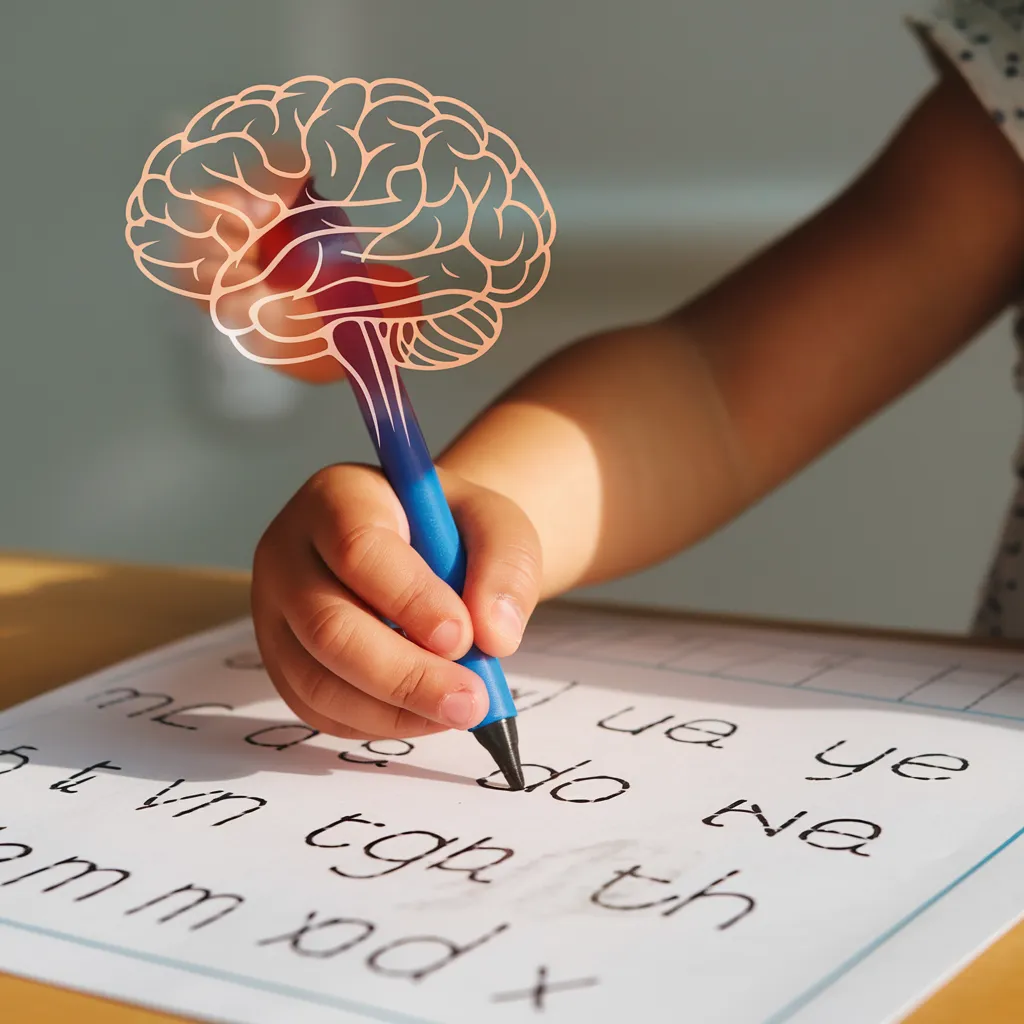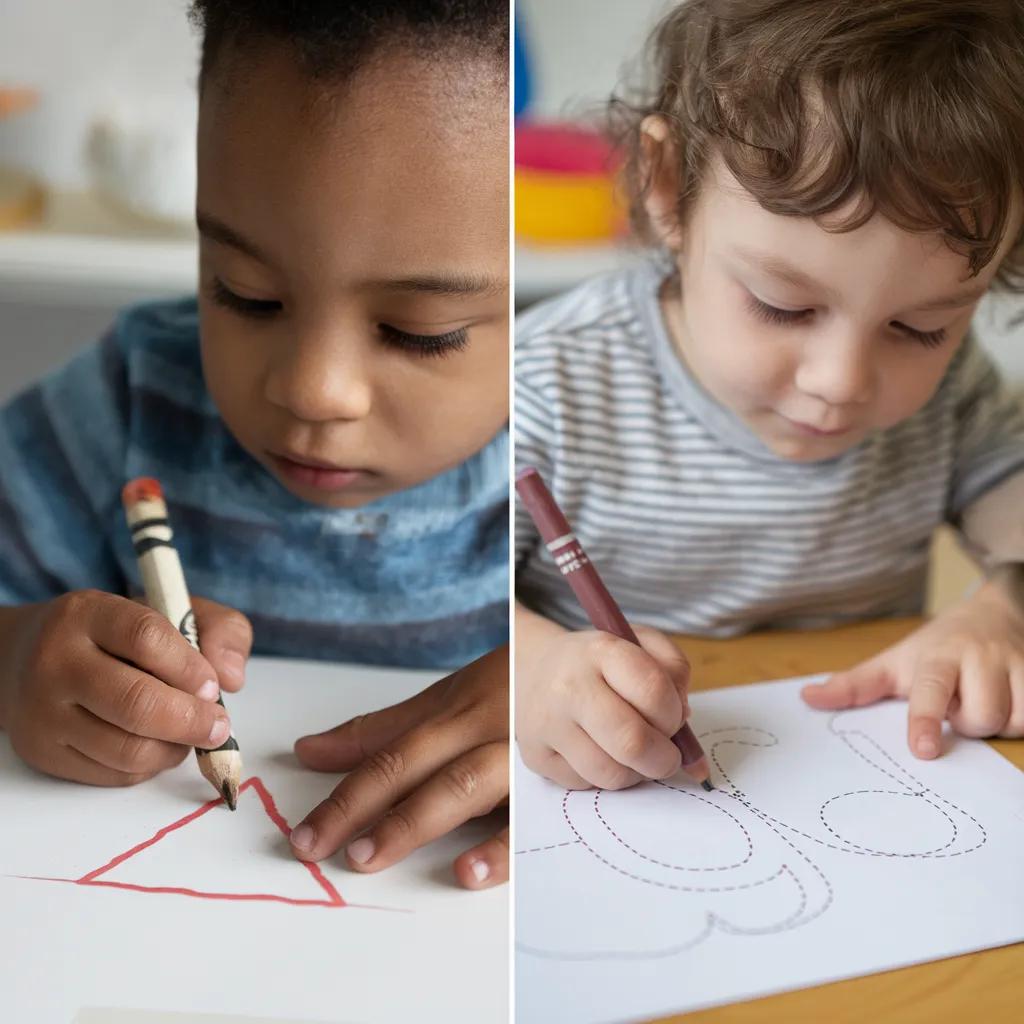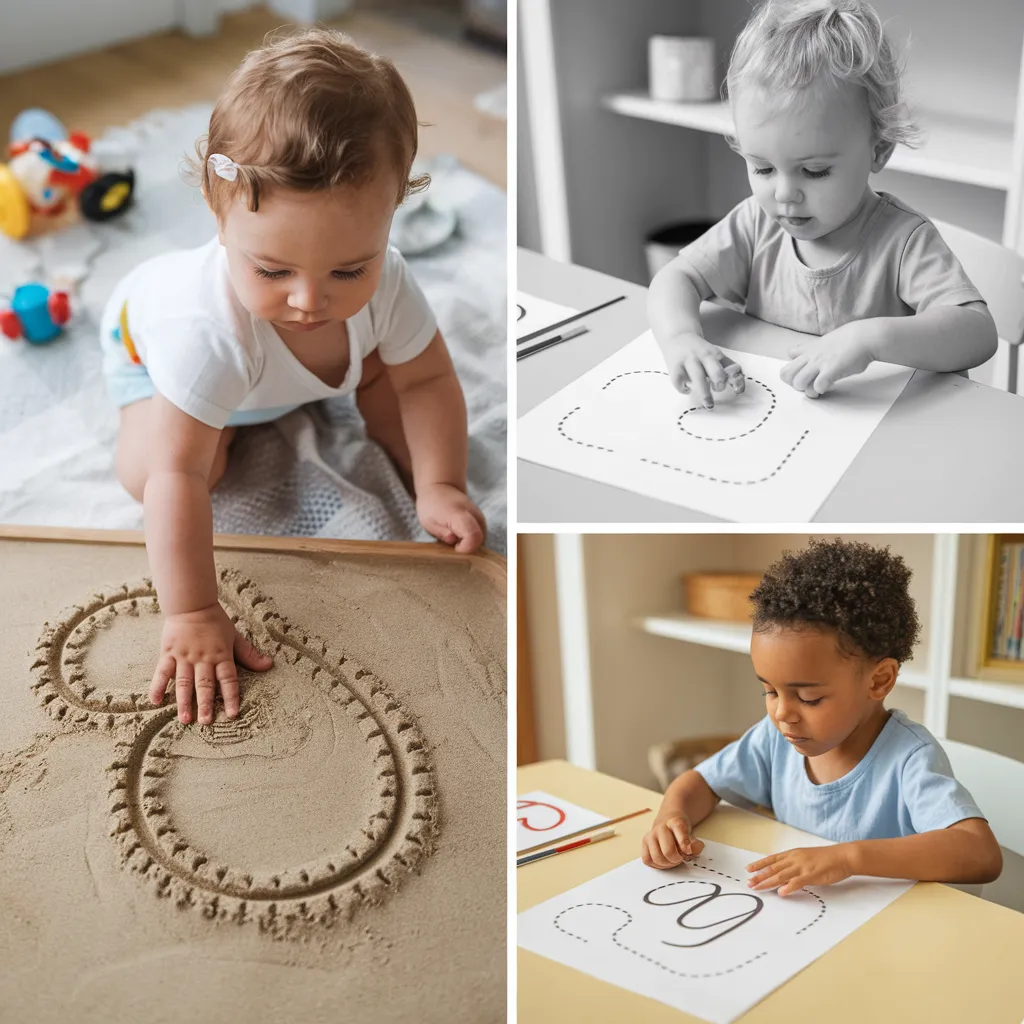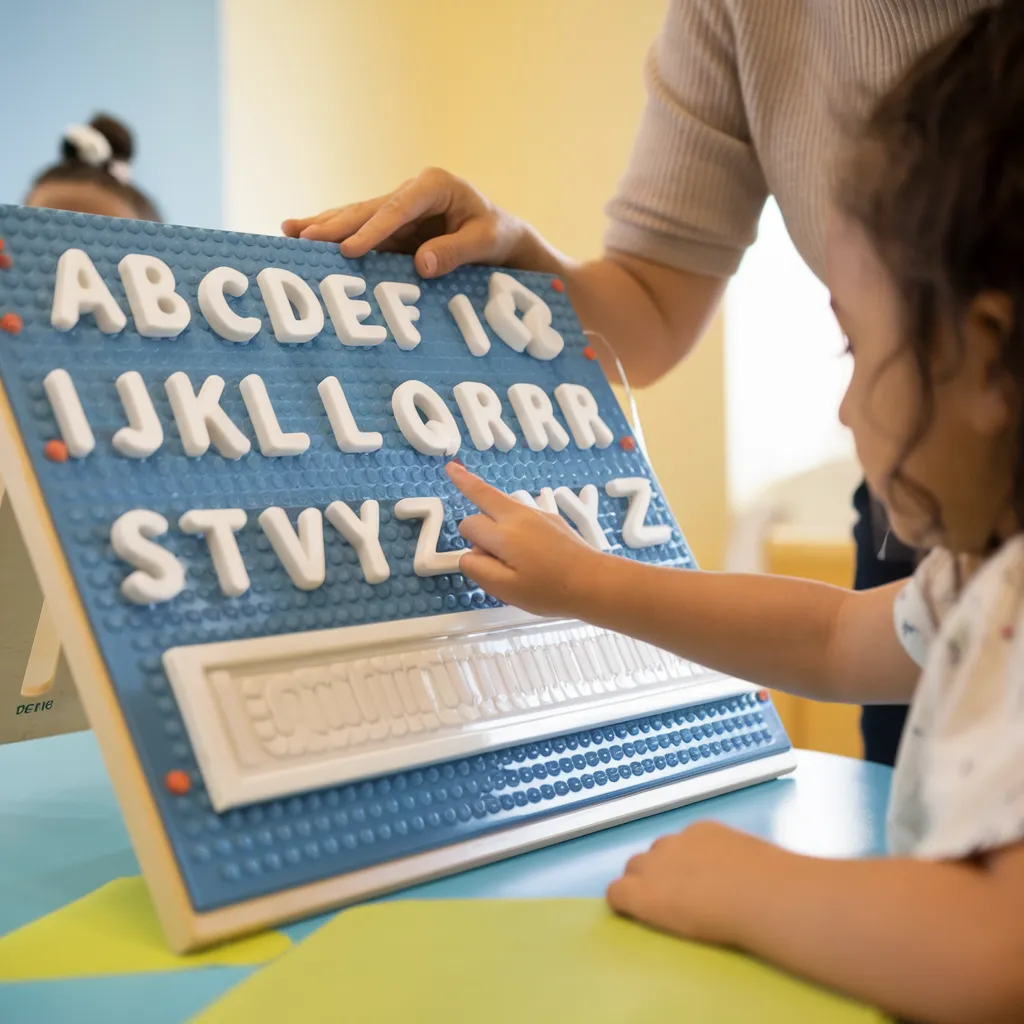Understanding how tracing helps handwriting development provides parents and educators with a valuable tool for supporting children’s literacy journey. Tracing—the process of following pre-drawn lines with a finger or writing tool—creates a crucial bridge between early scribbling and independent letter formation. This seemingly simple activity develops muscle memory, improves fine motor control, and builds neural pathways that support handwriting fluency. Whether working with preschoolers just beginning to hold crayons or elementary students refining their penmanship, tracing exercises offer scaffolded support that gradually builds confidence and competence. As children trace letters, numbers, shapes, and patterns, they internalize the movements needed for clear, efficient handwriting while developing fundamental skills that extend far beyond penmanship.

The Neurological Foundations of How Tracing Helps Handwriting
To fully appreciate how tracing helps handwriting, we must understand the brain-body connections involved:
Motor Memory Development
- Neural pathway formation: Repeated tracing movements create strong neural connections
- Procedural memory building: Movement patterns become automatic through repetition
- Hand-eye coordination enhancement: Visual input coordinates with precise motor responses
- Spatial awareness development: Understanding how letters sit in space relative to lines
- Directional reinforcement: Learning standard left-to-right and top-to-bottom patterns
Cognitive Processing Benefits
Understanding how tracing helps handwriting requires recognizing its cognitive advantages:
- Visual Discrimination Improvement
- Recognizing subtle differences between similar letters (b/d, p/q)
- Distinguishing essential from non-essential letter features
- Developing consistent letter sizing and spacing awareness
- Building pattern recognition abilities
- Strengthening visual memory for letter shapes
- Executive Function Enhancement
- Developing focused attention during tracing tasks
- Building self-regulation when following prescribed paths
- Improving task persistence and completion
- Developing planning skills for letter formation
- Building working memory for letter sequence and formation
- Language-Motor Integration
- Connecting letter shapes with their sounds and meanings
- Associating physical movements with language symbols
- Developing awareness of writing as communication
- Building letter recognition through multisensory experiences
- Creating foundations for spelling and composition
The Physical Mechanics of How Tracing Helps Handwriting
Tracing contributes significantly to the physical skills required for handwriting proficiency:

Fine Motor Skill Development
- Hand Strength and Dexterity
- Building finger isolation abilities
- Developing appropriate pressure modulation
- Strengthening hand muscles for writing endurance
- Improving precision in small movement control
- Developing in-hand manipulation skills
- Grip Development and Refinement
- Establishing proper tripod or quadrupod pencil grip
- Maintaining consistent hand position during writing
- Developing controlled tool manipulation
- Building finger flexibility and coordination
- Reducing hand fatigue during writing
- Bilateral Coordination Enhancement
- Developing dominant hand specialization
- Building non-dominant hand support skills
- Improving crossing midline abilities
- Developing coordination between both sides of the body
- Building foundations for keyboard skills and other bilateral tasks
Progressive Tracing Techniques: How Tracing Helps Handwriting at Different Stages
Different developmental stages benefit from specific tracing approaches:

Early Foundations (Ages 3-4)
- Sensory-Based Tracing Activities
- Finger tracing in sand, salt, or shaving cream
- Using paint bags for mess-free sensory tracing
- Creating raised line paths with glue or puffy paint
- Implementing water painting on chalkboards
- Using textured materials for enhanced tactile feedback
- Large Motor Movement Patterns
- Walking along tape lines on floors
- Creating arm-sized air writing motions
- Using whole-arm movements on vertical surfaces
- Implementing ribbon wands for large pattern tracing
- Creating body-scale letter shapes through movement
Intermediate Development (Ages 5-6)
How tracing helps handwriting becomes more letter-focused at this stage:
- Basic Stroke Pattern Mastery
- Tracing horizontal, vertical, and diagonal lines
- Following curved and circular paths
- Combining strokes into pre-letter shapes
- Implementing connected pattern sequences
- Developing consistent directionality
- Letter Formation Foundations
- Tracing uppercase letters (typically easier for beginners)
- Following numbered steps for letter formation
- Using color-coded starting points and directional cues
- Implementing gradually fading support lines
- Creating letter-picture associations for memory
Advanced Refinement (Ages 7-9)
- Cursive Transition Support
- Tracing connecting strokes between letters
- Following fluid cursive letter formations
- Implementing word-level cursive tracing
- Using highlighted connection points between letters
- Developing rhythm and flow through connected writing
- Speed and Fluency Development
- Tracing with timed components
- Following gradually accelerating patterns
- Implementing trace-and-write exercises with reducing support
- Using rhythmic tracing with auditory or visual cues
- Developing automaticity through strategic repetition
Implementation Strategies: Maximizing How Tracing Helps Handwriting
Effective implementation enhances the benefits of tracing exercises:
Multisensory Enhancement Approaches
- Tactile Reinforcement Techniques
- Using textured tracing boards
- Implementing bumpy or raised line paper
- Creating finger tracing paths with texture variations
- Using vibrating tools for sensory feedback
- Implementing temperature variation (cool/warm surfaces)
- Auditory Integration Methods
- Adding verbal pathways (« down, around, up »)
- Creating rhythmic chants for letter formations
- Implementing sounds that correspond to different strokes
- Using music to accompany tracing movements
- Developing letter stories with sound effects
- Visual Support Strategies
- Using color-coded directional cues
- Implementing animated demonstration videos
- Creating visual analogies for letter shapes
- Using highlighting for starting points
- Developing visual pathway cues with arrows
Motivation and Engagement Factors
Understanding how tracing helps handwriting is enhanced by maintaining high engagement:
- Interest-Based Adaptations
- Connecting tracing activities to favorite themes
- Using characters or stories to guide tracing tasks
- Implementing game-based tracing challenges
- Creating meaningful communication contexts
- Developing personalized tracing materials
- Progress Monitoring Systems
- Creating visual progress trackers
- Implementing sample collection for comparison
- Using specific skill mastery checklists
- Developing celebration rituals for milestone achievements
- Implementing self-assessment opportunities
Troubleshooting: When Maximizing How Tracing Helps Handwriting Requires Adaptations
Address common challenges with these targeted strategies:

Resistance and Frustration Management
- Engagement Modifications
- Shortening tracing sessions to match attention span
- Implementing choice within structured options
- Creating success-guaranteed entry points
- Using highly motivating contexts
- Developing movement breaks between tracing tasks
- Physical Support Adjustments
- Implementing pencil grips or adaptive tools
- Using slant boards for optimal writing position
- Creating stabilized paper systems
- Implementing weighted tools for sensory feedback
- Developing modified seating for proper posture
Special Considerations
- Support for Learning Differences
- Creating larger tracing paths for visual processing needs
- Implementing reduced visual distraction templates
- Using color overlays for visual sensitivity
- Developing kinesthetic teaching approaches
- Creating hand-over-hand support fading systems
- Advanced Writer Adaptations
- Implementing precision-focused tracing for refinement
- Creating speed-building trace-and-write systems
- Developing style exploration through tracing
- Using specialized script tracing for specific purposes
- Implementing creative applications of tracing skills
Conclusion
Understanding how tracing helps handwriting provides a powerful foundation for supporting children’s writing development across multiple dimensions. Through systematic tracing activities that progress from simple patterns to complex letter formations, children develop the neural pathways, fine motor skills, and cognitive foundations essential for handwriting success. By implementing multisensory approaches, adapting to individual needs, and maintaining high engagement levels, parents and educators can maximize the benefits of tracing for handwriting development. Start with age-appropriate tracing activities that match your child’s current abilities, celebrate small improvements, and gradually increase challenges as skills develop. Remember that consistent, positive practice creates the muscle memory and confidence that ultimately leads to fluent, automatic handwriting—a skill that continues to benefit children academically even in our increasingly digital world.
15 Playful Tracing Lines for Toddlers Activities That Build Essential Skills
Frequently Asked Questions
At what age should children start tracing to develop handwriting skills?
Informal tracing activities can begin as early as 18-24 months with finger tracing in sensory materials like sand or shaving cream, though this serves primarily as sensory exploration rather than formal handwriting preparation. Most children benefit from more structured tracing activities around age 3-4, starting with basic shapes and lines before progressing to letters. Look for developmental readiness signs like sustained attention to fine motor tasks, ability to hold writing tools with some control, and interest in making marks on paper. Remember that developmental readiness varies widely—follow your child’s interest and ability levels rather than rigid age guidelines. Early tracing experiences should always be playful and pressure-free, gradually increasing in structure as children develop.
How long should children spend on tracing activities each day?
Quality matters more than quantity when it comes to tracing practice. For preschoolers (3-5 years), limit formal tracing sessions to 5-10 minutes, potentially split into multiple brief sessions throughout the day. Elementary-aged children (6-8 years) can typically engage in 10-15 minutes of focused tracing work. Watch for signs of fatigue or frustration like changes in posture, grip, or attention—these indicate it’s time to take a break. Consistent short practice sessions yield better results than occasional long sessions. Integrate tracing naturally into daily activities rather than treating it as an isolated drill. The goal is building positive associations with writing while developing skills, not creating resistance through excessive practice.
Can tracing activities help children who already have poor handwriting habits?
Tracing can effectively help « reset » problematic handwriting patterns, though it requires a systematic approach when working with established habits. Begin by identifying specific issues (irregular letter sizing, incorrect letter formation, awkward grip, etc.) and design targeted tracing exercises that address these particular challenges. Often, returning to larger-scale tracing with proper formation emphasis helps retrain muscle memory even for older children. Combine tracing with explicit instruction about what needs changing and why. Provide immediate feedback during tracing practice, with gradual release toward independent writing. Progress may be slower when correcting established patterns compared to initial learning, requiring patience and consistent reinforcement. For significant handwriting difficulties, consider consulting an occupational therapist for specialized assessment and intervention.
Does tracing actually help develop creativity in writing or just mechanical skills?
While tracing primarily develops the mechanical aspects of handwriting, it indirectly supports creative writing by reducing the cognitive load associated with letter formation. When children achieve automaticity in handwriting through activities like tracing, they can dedicate more mental energy to idea generation, vocabulary selection, and composition. Think of it as similar to learning musical scales before playing creative compositions—the technical foundation enables creative expression. To maximize creative development alongside tracing, incorporate activities that connect tracing to meaningful communication: tracing words for personal messages, combining traced letters into original stories, or tracing specialized vocabulary related to topics of interest. The ultimate goal of fluid handwriting is self-expression, with tracing serving as a scaffold toward that purpose.
In this digital age, is it still important to focus on handwriting through tracing?
Despite our increasingly digital world, research continues to demonstrate the value of handwriting for cognitive development, reading skills, and information retention. Neuroimaging studies show that handwriting activates brain regions critical for literacy in ways typing does not. Additionally, many classroom activities and assessments still require handwritten work, making legible, efficient handwriting a practical academic advantage. Tracing helps develop fine motor coordination applicable to many life skills beyond writing. While technology offers valuable tools, a balanced approach that includes handwriting development through activities like tracing provides children with versatile communication options. Consider tracing as developing a fundamental skill set that remains valuable regardless of technological changes, much like basic mathematical understanding remains essential despite calculators.
